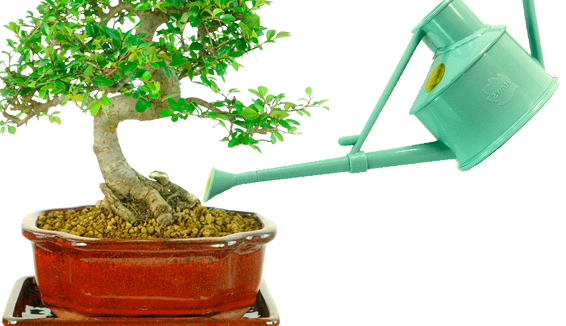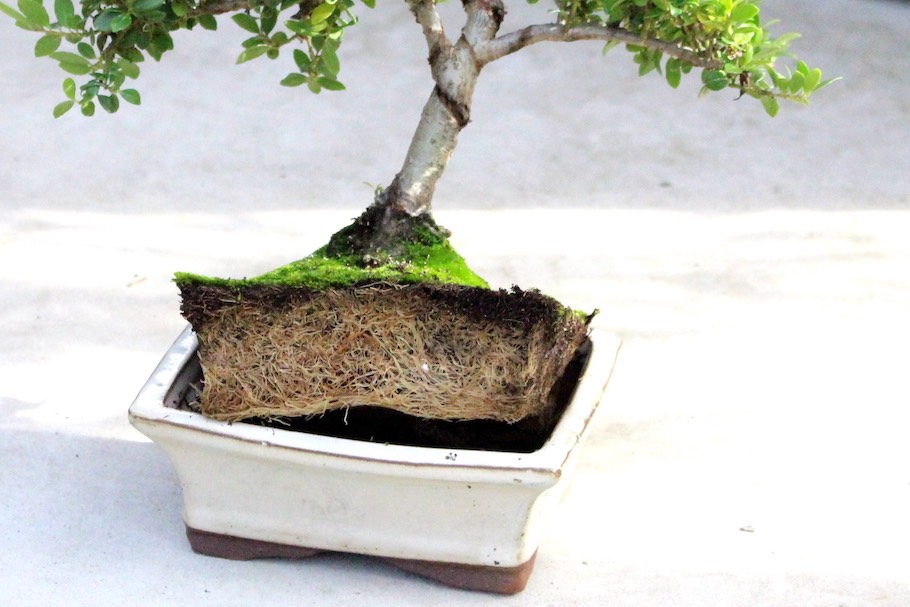Bonsai trees do not need water every day. Watering frequency depends on the tree species, pot size, and environmental conditions.
Bonsai trees, miniature representations of full-sized trees, require special care to thrive. Proper watering is crucial for their health. Overwatering or underwatering can harm the tree. Factors such as tree species, pot size, and local climate affect watering needs. Some bonsai may need water daily, while others might need it less frequently.
Check soil moisture regularly to determine the watering schedule. Well-draining soil helps prevent root rot and ensures proper hydration. Consistent care and attention to these details will keep your bonsai healthy and vibrant. Understanding your bonsai’s specific needs is key to successful cultivation.
Bonsai Basics
Bonsai trees are miniature trees grown in containers. They require special care to thrive. One key aspect is watering. Do bonsai need water every day? Let’s explore the basics of bonsai care.
What Is Bonsai?
Bonsai is an art form. It involves growing trees in small pots. The goal is to create a miniature version of a full-sized tree. The word “bonsai” means “planted in a container” in Japanese.
Bonsai trees can live for many years. Some can even outlive their owners. Proper care is essential for their survival. Watering is a crucial part of this care.
Types Of Bonsai
There are different types of bonsai trees. They vary based on species, size, and style. Here are some common types:
- Ficus: Easy to care for. Good for beginners.
- Juniper: Popular choice. Has needle-like leaves.
- Maple: Known for beautiful leaves. Changes color in autumn.
- Pine: Long-lasting. Requires more care.
Watering Bonsai
Do bonsai need water every day? Not necessarily. The answer depends on several factors:
- Type of bonsai
- Climate and season
- Soil type
- Container size
Check the soil daily. It should be slightly moist but not waterlogged. Overwatering can harm the tree.
| Bonsai Type | Watering Frequency |
|---|---|
| Ficus | Every 2-3 days |
| Juniper | Every 3-4 days |
| Maple | Every 1-2 days |
| Pine | Every 3-5 days |
Always adjust based on your specific bonsai’s needs. Monitor the soil and adjust watering accordingly.
Watering Needs
Bonsai trees are unique and require special care. One of the most important aspects of this care is understanding their watering needs. Many people believe bonsai need water every day, but this is not always true. Proper watering ensures your bonsai stays healthy and vibrant.
Daily Watering Myths
Many believe bonsai need water every day. This is a myth. Watering daily can harm your bonsai. Each tree has different needs. Factors like soil type, pot size, and climate affect watering frequency. Instead of a schedule, check the soil. If the top inch is dry, it’s time to water.
Signs Of Overwatering
Overwatering can damage your bonsai. Look for these signs:
- Yellowing leaves
- Soft and mushy roots
- Foul smell from the soil
- Stunted growth
To prevent overwatering, ensure proper drainage. Use a soil mix that drains well. Avoid letting water sit in the saucer beneath the pot.
Factors Affecting Watering
Bonsai trees need special care, especially with watering. Various factors influence how often you need to water your bonsai. Two key factors are climate and soil composition. Understanding these can help you ensure your bonsai thrives.
Climate Influence
Climate plays a significant role in bonsai watering. In hot weather, water evaporates quickly. This means you might need to water your bonsai every day. During cooler months, the need for water decreases.
Humidity also affects watering. In dry climates, bonsai trees need more water. In humid areas, they need less frequent watering. Wind speed can also dry out the soil faster.
| Climate Condition | Watering Frequency |
|---|---|
| Hot and Dry | Every Day |
| Cool and Humid | Every Few Days |
| Windy | Every Day |
Soil Composition
The type of soil your bonsai is planted in affects water retention. Different soil types hold water differently. Well-draining soil is essential for bonsai health. It prevents root rot and allows air to reach the roots.
Soil with a high percentage of sand drains quickly. This type needs more frequent watering. Soil with more organic matter retains water longer. This means less frequent watering.
- Sandy Soil: Drains quickly, water every day
- Clay Soil: Retains water, water every few days
- Loamy Soil: Balanced, water as needed
Regularly check soil moisture levels. Insert a finger into the soil up to the second knuckle. If the soil feels dry, it’s time to water your bonsai.

Credit: www.bonsaidirect.co.uk
Seasonal Care
Bonsai trees need different care in each season. Knowing how to water them helps keep them healthy year-round. Let’s explore the seasonal care for Bonsai trees.
Spring And Summer
During spring and summer, Bonsai trees grow rapidly. They need more water because the soil dries quickly. Check the soil daily to see if it needs water. Use a moisture meter or stick your finger into the soil.
- Water when the top layer feels dry.
- Ensure proper drainage to avoid root rot.
- Mist the leaves for extra humidity.
Place the Bonsai in a sunny spot, but avoid direct afternoon sun. This helps prevent the leaves from burning.
Fall And Winter
During fall and winter, Bonsai trees grow slower. They need less water because the soil stays moist longer. Check the soil every few days instead of daily. Water less frequently but still ensure the soil does not dry out completely.
| Condition | Watering Frequency |
|---|---|
| Indoor Bonsai | Once a week |
| Outdoor Bonsai | Every two weeks |
Keep the Bonsai away from cold drafts and provide enough light. Use a humidity tray to maintain moisture levels around the tree.
Optimal Watering Techniques
Watering your bonsai correctly is crucial for its health and growth. Overwatering or underwatering can harm your bonsai. Here are optimal techniques to ensure your bonsai thrives.
Soil Moisture Check
Always check the soil before watering your bonsai. Use your finger to feel the soil. Insert your finger about an inch deep. If the soil feels dry, it’s time to water.
Using a soil moisture meter can also help. This tool gives an accurate reading of soil moisture. It helps you avoid overwatering or underwatering.
Proper Watering Methods
Water your bonsai thoroughly. Ensure the water reaches the roots. Pour water until it drains from the bottom.
Use a watering can with a fine nozzle. This prevents soil displacement. Water gently to avoid disturbing the roots.
Morning is the best time to water bonsai. It allows the soil to dry during the day. Avoid watering at night as it can cause root rot.
Here is a simple table to guide you:
| Step | Action |
|---|---|
| 1 | Check soil moisture with finger or meter. |
| 2 | Use a watering can with a fine nozzle. |
| 3 | Water until it drains from the bottom. |
| 4 | Water in the morning to prevent root rot. |
Follow these steps for a healthy bonsai. Proper watering ensures your bonsai grows strong and beautiful.

Credit: www.bonsaiempire.com
Common Mistakes
Caring for a bonsai tree can be tricky. One common mistake is not knowing how often to water it. Some people water too much, while others water too little. Both can harm the tree.
Overwatering Issues
Overwatering is a big problem for bonsai trees. The roots need air to breathe. Too much water fills up air pockets in the soil. This can cause root rot.
Signs of overwatering:
- Yellow leaves
- Soft, mushy roots
- Moldy soil
To avoid overwatering, check the soil first. Stick your finger in the soil about one inch deep. If it feels wet, wait before watering again.
Underwatering Problems
Underwatering can also hurt your bonsai. The tree needs enough water to stay healthy. Without it, the tree can dry out and die.
Signs of underwatering:
- Brittle, dry leaves
- Soil pulling away from the pot edges
- Brown leaf tips
To prevent underwatering, keep a regular watering schedule. Check the soil daily, especially during hot weather.
Here is a simple table to help you remember:
| Watering Issue | Signs | Prevention Tips |
|---|---|---|
| Overwatering | Yellow leaves, soft roots | Check soil moisture before watering |
| Underwatering | Dry leaves, brown tips | Water regularly, check soil daily |
Complementary Care Tips
Taking care of a bonsai tree involves more than just watering. Complementary care tips ensure your bonsai remains healthy and beautiful. These tips include fertilization, pruning, and shaping. Each aspect contributes to the well-being of your bonsai.
Fertilization
Bonsai trees need nutrients to grow. Fertilizing your bonsai is crucial. Use a balanced fertilizer for best results.
- Apply fertilizer once a month during the growing season.
- Use organic or liquid fertilizers for better absorption.
- Avoid over-fertilizing to prevent root burn.
A balanced fertilizer contains equal parts of nitrogen, phosphorus, and potassium. These nutrients promote strong growth and vibrant leaves.
Pruning And Shaping
Pruning keeps your bonsai in shape. It controls growth and enhances beauty.
- Trim long branches to maintain the desired shape.
- Remove dead or weak branches to encourage new growth.
- Use clean, sharp tools to make precise cuts.
Shaping gives your bonsai its unique form. Use wires to guide branches into position. Be gentle to avoid damaging the tree. Regular pruning and shaping ensure your bonsai looks its best.
Tools And Accessories
Proper watering is crucial for maintaining healthy bonsai trees. The right tools and accessories can make this task easier and more efficient. Here, we discuss the essential tools and accessories for watering your bonsai daily.
Watering Cans
A watering can is one of the most important tools for bonsai care. Choose a can with a fine nozzle. This ensures a gentle flow of water, preventing soil erosion. Metal or plastic cans both work well. Ensure the can has a long spout for reaching all parts of the bonsai.
Here is a quick comparison table:
| Feature | Metal Can | Plastic Can |
|---|---|---|
| Durability | High | Moderate |
| Weight | Heavy | Light |
| Price | More Expensive | Less Expensive |
Moisture Meters
Moisture meters are handy devices that help measure soil moisture levels. They are simple to use and provide accurate readings. Insert the probe into the soil to check moisture content. This helps avoid overwatering or underwatering your bonsai.
Key benefits of using a moisture meter:
- Prevents overwatering
- Ensures consistent moisture levels
- Easy to read and use
Moisture meters come in various types:
- Analog meters
- Digital meters
Both types offer reliable results. Choose one that suits your preference and budget.

Credit: m.youtube.com
Conclusion
Watering bonsai daily depends on factors like species, climate, and soil. Monitor your bonsai’s moisture levels regularly. Ensure the soil stays slightly moist but not waterlogged. Proper watering routines keep your bonsai healthy and thriving. Adjust based on seasonal changes and individual plant needs for optimal growth.

